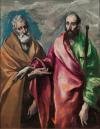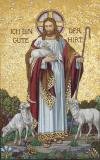
TRANSFIGURATION OF THE LORD
Tradition places the transfiguration of Jesus on Mount Tabor, a mountain that rises, isolated, in the middle of the fertile plain of Esdraelon. Covered with holm oak, carobs, and pine trees since ancient times, it was called the holy mountain and on top, cults to the pagan gods were offered. Today the place invites meditation and prayer. There it is natural to raise our gaze to the sky and our thought to God.



















